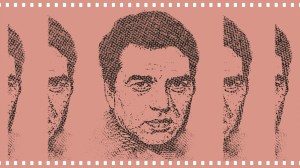As third Covid wave sets in, bankers see likely NPA surge, growth impact
🔴 Expect RBI to delay accommodative monetary policy normalisation
 The RBI needs to urgently revisit its inflation forecast and its monetary policy stance in order to avoid potentially painful adjustments down the road. (File)
The RBI needs to urgently revisit its inflation forecast and its monetary policy stance in order to avoid potentially painful adjustments down the road. (File)The banking sector, which is anxiously viewing the rising Covid graph in the country, doesn’t expect a repeat of 2020 but bankers are bracing for a rise in non-performing assets (NPAs). On the other hand, they expect the Reserve Bank of India (RBI) to delay normalisation of the accommodative monetary policy and any possible hike in interest rates, with focus remaining on growth.
“We don’t expect any significant decline in credit offtake but there could be some slippages in loans if states impose stringent lockdown to tackle the pandemic,” said an official of a nationalised bank. Credit offtake growth has already declined to 0.4 per cent (Rs 43,484 crore) in December from 1.1 per cent (Rs 1,18,951 crore) in November.
Bankers note that prolonged curbs on economic activity such as closing time of malls, weekend curfew, restrictions on cinemas, gyms and restaurants could affect repayment capacity of borrowers. While bankers say it’s too early to make an assessment on the likelihood of a hit on EMIs, the situation could deteriorate if the pandemic lingers for a prolonged period and lay-offs happen in various sectors like travel, tourism, retail and hospitality. Banks have already cut down the number of employees in branches across the country to tackle the spread of the virus.
Rating agency Icra said a third Covid wave poses high risks to performance of borrowers who were already impacted by the earlier waves. Icra estimates that the overall standard restructured loan book for banks increased to 2.9 per cent of standard advances, or Rs 2.85 lakh, crore as on September 30, 2021, up from 2 per cent as on June 30, 2021. “Economic impact is expected to be shallower than the second wave, drawing on past/ international experience. Slower policy normalisation is likely to be accompanied by gradual reduction in fiscal deficits,” said Radhika Rao, senior economist, DBS Bank.
“With the increased spread of the new Covid-19 variant, i.e. Omicron, there is a high possibility of the occurrence of a third wave. As banks restructured most of these loans with a moratorium of up to 12 months, this book is likely to start exiting the moratorium from Q4 FY2022 and Q1 FY2023. Therefore, a third wave poses high risk to the performance of the borrowers that were impacted by the previous waves and hence poses a risk to the improving trend of asset quality, profitability, and solvency,” said Anil Gupta, vice president, financial sector ratings, ICRA Ratings.
Prolonged curbs on economic activity such as weekend curfew, restrictions on cinemas, gyms and restaurants might affect borrowers’ repayment capacities.
Macro stress tests for credit risk indicate that the gross non-performing asset (GNPA) ratio of banks may increase from 6.9 per cent in September 2021 to 8.1 per cent by September 2022 under the baseline scenario, and to 9.5 per cent under a severe stress scenario, according to the Financial Stability Report of the RBI. NPAs to advances ratio declined from 8.2 per cent at end-March 2020 to 7.3 per cent at end-March 2021 and further to 6.9 per cent at end-September 2021.
With states imposing Covid-related restrictions (night curfew on movement of people, restaurants allowed at 50 per cent capacity, offices to operate at 50 per cent capacity in various states), economic activity is likely to get impacted in Q4FY22, according to Abheek Barua, chief economist, HDFC Bank.
“There is a downside risk to our growth forecast to the tune of 20-30 bps. The current forecast is 6.1 per cent for Q4 of FY22.
“Downside risks emanate from additional states imposing restrictions, restrictions extending beyond January 2022 and a slowdown in global recovery to weigh on exports,” Barua said. “The RBI’s liquidity normalisation/ adjustment to continue while rate hike expectations could moderate as Omicron risk looms. The reverse repo rate hike in February is now uncertain.”
The economy expanded by 8.4 per cent year-on-year in July-September 2021, with the level of GDP exceeding pre-pandemic levels (July-September 2019) for the first time since Covid struck. More recent high-frequency indicators of economic activity suggest some loss of momentum in the third quarter of 2021-22. The pace of the recovery remains uneven across sectors, inflation formation is being subjected to repetitive supply shocks and the outlook is overcast with global risks. Omicron haunts near-term prospects, the RBI said in the report.
“If India wants to become a $5-trillion economy then obviously we can’t be happy with a 5-6 per cent economic growth. We need to grow above 8 per cent,” said former SBI Chairman Rajnish Kumar.
- 01
- 02
- 03
- 04
- 05































